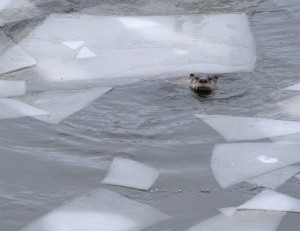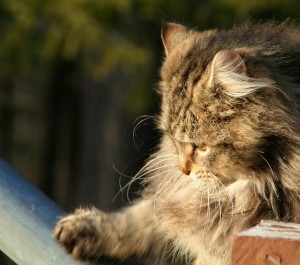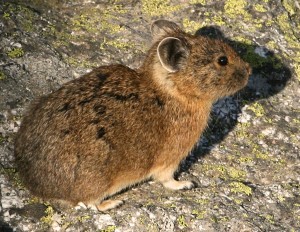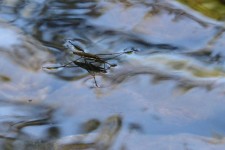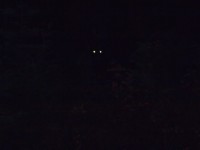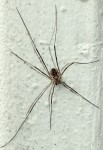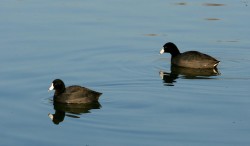How do seals hunt in murky water? How do cats prowl on moonless nights without bumping into everything? They can’t extend their legs like we do our arms to keep from bumping into objects in the dark. They need their legs to swim or walk so instead they have whiskers.
While typically noticed on cats and dogs, all mammals have whiskers except for humans and monotremes (duck-billed platypus and echidnas). A man’s whiskers aren’t the same as a cat’s whiskers.
True whiskers are a type of hair but differ from ordinary hair (like that of a man’s beard) because they are longer, thicker and have nerve endings in their base. They also are embedded deeper into the skin.
Technically, these special hairs are called vibrissae and those found on the face are called whiskers. Vibrissae can be found on various parts of the body like on the ankles of squirrels or the rumps of some crevice-roosting bats.
Vibrissae help an animal gather information about its environment. When vibrissae brush against an object, the movement is detected by nerve cells within the hair follicle.
The nerve cells then relay the information about the direction, velocity and duration of the movement to the brain where it is translated into information the animal can utilize, such as location, size and texture.
Not all vibrissae are created the same. Cats and rats have 100 to 200 nerve cells per whisker while seals have up to 1,500 nerve cells per whisker.
Seals are thought to have the most impressive sense with their whiskers. Seals can follow water currents left by swimming fish after they have swam by. This ability allows them to hunt in murky and deep water where they cannot see fish.
Similarly, a cat’s whiskers can detect air currents generated by a moving mouse. Members of the feline family also use their whiskers to stalk quietly through the brush at night without bumping into anything. Their whiskers stick out as wide as their body in order to tell the feline whether they can fit through an opening.
Canines (dogs, foxes, wolves, coyotes) don’t have long whiskers like felines because they don’t stalk prey the same way. But since a dog’s nose blocks his view of anything near his mouth, he uses his whiskers to help locate, identify and pick up small objects near his mouth.
Likewise, a deer’s chin whiskers help tell the deer how far its head is above the ground or when its chin is going to contact an object.
Some mammals can move their whiskers independently but some animal’s whiskers are moved together by changing the position or shape of the whisker pad.
Rats “whisk” their whiskers back and forth rapidly–the fastest whisking known by scientists–but not all animals with whiskers “whisk”. Large rodents, lagomorphs (such as rabbits, hares and pikas) and some carnivores make sporadic whisking vibrations while bats, ungulates (such as elk, moose and deer), primates and cetaceans (such as whales and dolphins) make few whisking movements.
Since the brain registers the information gathered by vibrissae, scientists still don’t fully understand the function of vibrissae in all mammals.
Will we ever understand why a squirrel has vibrissae on the side of its nose, some on its cheeks, four above each eye, some on the underside of its chin, a few just above its throat and some near its wrists? Are squirrels that clumsy at night?


